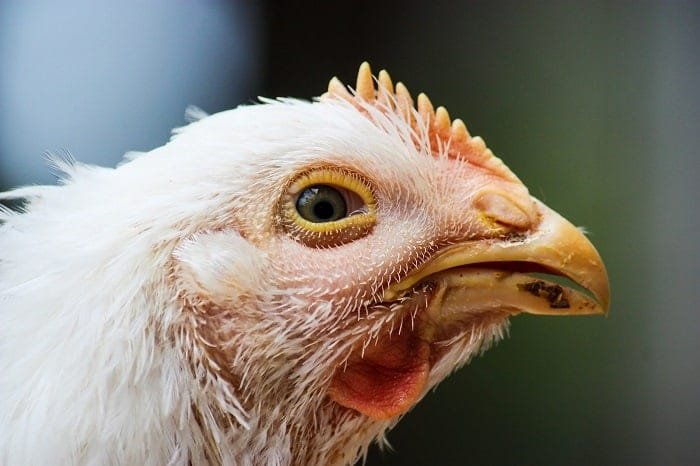How to Tell a Rooster from a Hen: The Easy Way

Identifying roosters from hens can be a very tricky adventure. However, in this article, the confusion about roosters vs. hens and how to tell a rooster from a hen will be completely wiped off.
The interesting thing about hatching chickens is that approximately 50% of the chicks will be roosters while the other 50% will be hens. That means, you already have a 50% chance of guessing the right sex of a chicken. But the goal of this article is to take it closer to 100%.
We will be looking at various ways of identifying a rooster from a hen from when they are just eggs, through their growing age, up until maturity.
So whether you’re a first-time chicken owner or you’re just curious about the differences between roosters and hens, read on to learn more!
Can You Tell A Rooster From A Hen When They Are Just Eggs?
No, you cannot tell a rooster from a hen when they are just eggs. The sex of a chicken is determined by the genes of the chicken, and these genes are not expressed until the chicken is fully developed.
There are some sex-linked traits that can be used to determine the sex of a chicken at a young age, but these traits are not always accurate. For example, in the Wyandotte breed, all chicks with black feathers are roosters, while all chicks with brown feathers are hens. However, there are other breeds of chickens where this is not the case.
The most accurate way to determine the sex of a chicken is to vent sex the chicken. This is a procedure that is done by a veterinarian or poultry expert and involves examining the chicken’s cloaca. The cloaca is the opening at the end of the digestive tract and reproductive tract. In roosters, the cloaca is slit-like, while in hens, it is round.
Vent sexing can be done when the chicken is as young as 7 days old. However, it is best to wait until the chicken is at least 10 days old, as the cloaca is not fully developed until then.

At What Age Can You Tell If a Chicken Is a Rooster or a Hen?
The age at which you can tell if a chicken is a rooster or a hen depends on the breed of chicken. For instance, Silkie chickens are hard to tell if they are roosters or hens especially when they are fully grown. However, most breeds can be sexed at around 6 weeks of age.
9 Physical Characteristics That Differentiate Roosters From Hens
Here are 9 physical characteristics that can be used to distinguish between roosters and hens:
1. Size:
Roosters are typically larger than hens, with a more muscular build. They can stand up to 3 feet tall and weigh up to 10 pounds. Hens are typically smaller, with a more slender build. They can stand up to 2 feet tall and weigh up to 6 pounds.
2. Feathers:
Roosters have more elaborate feathers than hens. Their comb (the fleshy growth on top of their head) is larger and brighter, and their wattles (the fleshy growths under their beaks) are also larger and brighter. Hens have smaller combs and wattles that are often a duller color.
3. Tail feathers:
Roosters have longer and more elaborate tail feathers than hens. Their tail feathers can be pointed or rounded, and they may be brightly colored. Hens have shorter and less elaborate tail feathers.
4. Spurs:
Roosters have spurs on their legs, while hens do not. Spurs are sharp, pointed growths that develop on the legs of roosters.
5. Comb and wattles:
Roosters have larger combs and wattles than hens. The comb is the fleshy growth on top of the head, and the wattles are the fleshy growths under the beak.
6. Facial color:
Roosters often have brighter facial colors than hens. The facial colors can include red, orange, yellow, or blue.
7. Plumage color (in some chicken breeds):
In some chicken breeds, the plumage color can be used to distinguish between roosters and hens. For example, in the Plymouth Rock breed, roosters are buff-colored, while hens are white.
8. Leg shape:
Roosters have thicker legs than hens. This is because roosters need strong legs to support their weight and to fight with other roosters. Hens have thinner legs that are better suited for walking and running.
9. Egg production:
Hens lay eggs, while roosters do not. Hens typically lay one egg per day, but they may lay more or less depending on their breed and their age. Roosters do not lay eggs.
If your chickens are not laying eggs as they should, Here are 15 awful reasons why your chickens are not laying eggs yet and the solution
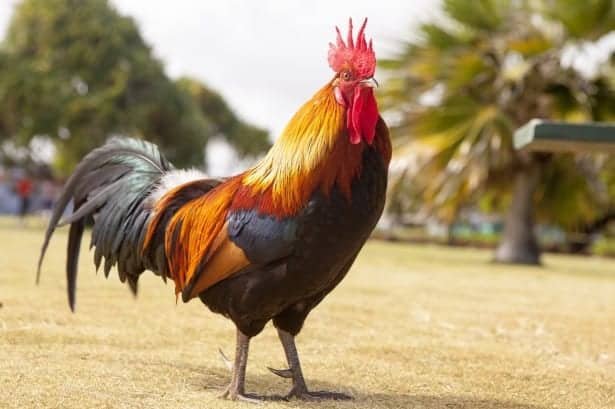
9 Behavioral Characteristics That Differentiate Roosters From Hens
1. Crowing:
Roosters crow to announce the arrival of dawn, to attract hens, and to defend their territory. Hens do not crow. The crowing of a rooster is a way for him to assert his dominance and to let other roosters know that he is in charge.
2. Guarding behavior:
Roosters are more likely to guard the flock from predators and other roosters. Hens are less likely to guard the flock. Roosters are more protective of their hens than hens are of their roosters. This is because roosters have a higher testosterone level, which makes them more aggressive.
3. Courtship:
Roosters will court hens by strutting, flapping their wings, and crowing. Hens will not court roosters. The courtship behavior of a rooster is a way for him to attract a hen and mate with her.
4. Mounting:
Roosters will mount hens to mate. Hens will not mount roosters. Mounting is a way for the rooster to fertilize the hen’s eggs.
5. Sparring:
Roosters may spar with each other to establish dominance. Hens do not spar. Sparring is a way for roosters to test their strength and agility against each other.
6. Aggressivity:
Roosters are more aggressive than hens. They may be more likely to peck or bite. Hens are less aggressive and are more likely to flee from danger. The aggression of a rooster is a way for him to defend his territory and his hens.
7. Territorial behavior:
Roosters are more territorial than hens. They will defend their flock from predators and other roosters. Hens are less territorial and are more likely to wander away from the flock. The territorial behavior of a rooster is a way for him to protect his hens and his food sources.
8. Social behavior:
Roosters are more social than hens. They are more likely to interact with other chickens and with humans. Hens are less social and are more likely to be solitary. The social behavior of a rooster is a way for him to establish dominance and to find mates.
9. Nesting behavior:
Hens will lay eggs and build nests. Roosters do not lay eggs or build nests. The nesting behavior of a hen is a way for her to lay her eggs and to protect them from predators.
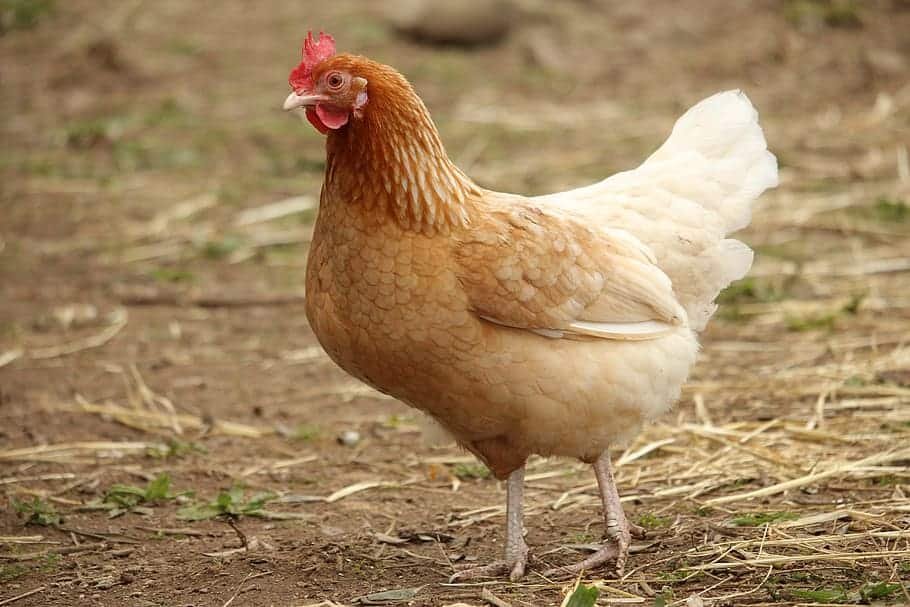
Benefits of Keeping a Rooster Instead of a Hen
Here are some benefits of keeping a rooster instead of a hen on your backyard farm:
- Roosters can help protect your flock from predators. Roosters are more aggressive than hens and are more likely to fight off predators. They will also sound the alarm if they see a predator approaching, giving your flock time to run to safety.
- They can help fertilize your hens’ eggs. If you want to hatch your own chicks, you will need a rooster. Roosters fertilize hens’ eggs by transferring sperm to them during mating.
- Roosters can help keep your flock in order. Roosters are natural leaders and will help keep your flock from getting too rowdy. They will also help to establish a pecking order, which will help to reduce fighting among the hens.
- They can also help your hens feel more secure. The presence of a rooster can make hens feel more secure, especially at night. This is because roosters are more likely to sound the alarm if they see a predator approaching.
- Roosters can be companions for your hens. Hens are social creatures and they enjoy the company of other chickens. A rooster can provide companionship for your hens, especially if you only have a few chickens.
- Roosters can be pets. Roosters can be just as affectionate and loving as hens. They can also be trained to do tricks and to follow commands.
- They can be beautiful creatures. Roosters come in a variety of colors and plumage patterns. They can be a real eye-catcher in your backyard.
Disadvantages of Keeping Roosters
There are several disadvantages to keeping a rooster on your backyard farm. Here are a few:
- Noise: Roosters are known for their loud crowing, which can be disruptive to neighbors and people who live nearby.
- Aggression: Roosters can be aggressive towards other roosters, hens, and even people. They may attack or peck other chickens, or even people who get too close to their flock.
- Predators: Roosters can attract predators to your backyard, such as hawks, coyotes, and foxes. This is because roosters are more likely to crow and alert predators to the presence of food.
- Cost: Roosters require more space and food than hens. They also need more attention and care, as they are more likely to get into fights with other roosters or hens.
- Legality: In some areas, it is illegal to keep roosters. This is because their crowing can be disruptive to neighbors.
Benefits of Keeping a Hen Instead of a Rooster
Here are some benefits of keeping a hen instead of a rooster on your backyard farm:
- Hens are quieter than roosters. They do not crow, which can be a nuisance for some people.
- Hens are less aggressive than roosters. They are less likely to fight with other chickens or with people.
- They are more docile than roosters. They are more likely to be calm and easy to handle.
- Hens are also less likely to cause property damage than roosters. Roosters may crow loudly and fight with other roosters, which can be disruptive and dangerous.
- Hens are more affordable than roosters. Roosters are often more expensive to purchase and to feed.
- They are easier to care for than roosters. Roosters require more space and more attention than hens.
- Hens are more productive than roosters. Hens lay eggs, while roosters do not. Their eggs can potentially hatch and multiply your flock.

Disadvantages of Keeping Hens
Here are some of the disadvantages of keeping a hen in your backyard farm:
- Noise: Hens can also be noisy, especially when they are laying eggs. They may cluck loudly or make other noises that can be disruptive to neighbors.
- Soiling: Hens are messy creatures and they will poop everywhere. You will need to clean their coop and run regularly to prevent the build-up of manure.
- Predators: Hens can be preyed upon by predators, such as hawks, coyotes, and foxes. You will need to take steps to protect your hens from predators, such as building a secure coop and run.
- Cost: Hens require food, water, and bedding. You will also need to purchase a coop and run. The cost of keeping hens can add up over time.
- Time commitment: Hens need to be fed and watered daily. You will also need to clean their coop and run regularly. Keeping hens can be a time-consuming hobby.
How to Tell a Pullet From a Cockerel
A pullet is a young female chicken that is not sexually mature and less than four months old. Pullets are usually smaller than adult hens and have less developed combs and wattles. They are often raised for their eggs, although some breeds are also kept for their meat or ornamental value.
A cockerel is a young male chicken that is also not sexually mature and less than a year old. Cockerels are usually smaller than adult roosters and have less developed combs and wattles as well. They are often raised for their meat, although some breeds are also kept for their ornamental value.
The difference between a pullet and a cockerel is mainly based on their physical appearance and behavior. Some of the ways to distinguish them are:
- Cockerels have broader bodies and bigger combs and wattles than pullets.
- Cockerels have multicolored pointy feather patterns, while pullets have smooth feather texture and less obvious plumage colors.
- Pullets have smaller combs and wattles than cockerels. The comb is the fleshy growth on top of the head, and the wattles are the fleshy growths under the beak.
- Cockerels are more aggressive than pullets, especially as they reach sexual maturity. They may become territorial and protective of their flock, and may even become aggressive towards humans. Pullets are generally more docile and less aggressive than cockerels.
- Cockerels may have spurs, which are sharp, pointed growths on their legs. Pullets do not have spurs.
- Cockerels can be identified by their crowing, which usually starts around four to six months of age. Pullets do not crow but may make clucking noises when they are ready to lay eggs.
Sexing Confusion Among Some Chicken Breeds
It is important to note that not all of these physical and behavioral characteristics will be present in all roosters and hens.
This sexing confusion is a common problem in some chicken breeds, especially those that have been bred for their ornamental qualities.
This is because the physical characteristics that are used to distinguish between roosters and hens are often subtle or absent in these breeds.
Here are two examples of chicken breeds with sexing confusion:
- Silkie: Silkie chickens are known for their soft, fluffy feathers and gentle temperament. Both roosters and hens have muffs of feathers on their face and legs, and both sexes have small combs and wattles. The only sure way to sex a Silkie chicken is to wait until it is old enough to crow (roosters) or lay eggs (hens).
- Buff Orpington: Buff Orpingtons are a large, dual-purpose breed that is known for their calm and friendly nature. Both roosters and hens have a single comb and wattles, and both sexes have a similar plumage color. The only sure way to sex a Buff Orpington chicken is to wait until it is old enough to crow (roosters) or lay eggs (hens).
Other chicken breeds that are prone to sexing confusion include the Brahma, Yokohama, and Cochin.
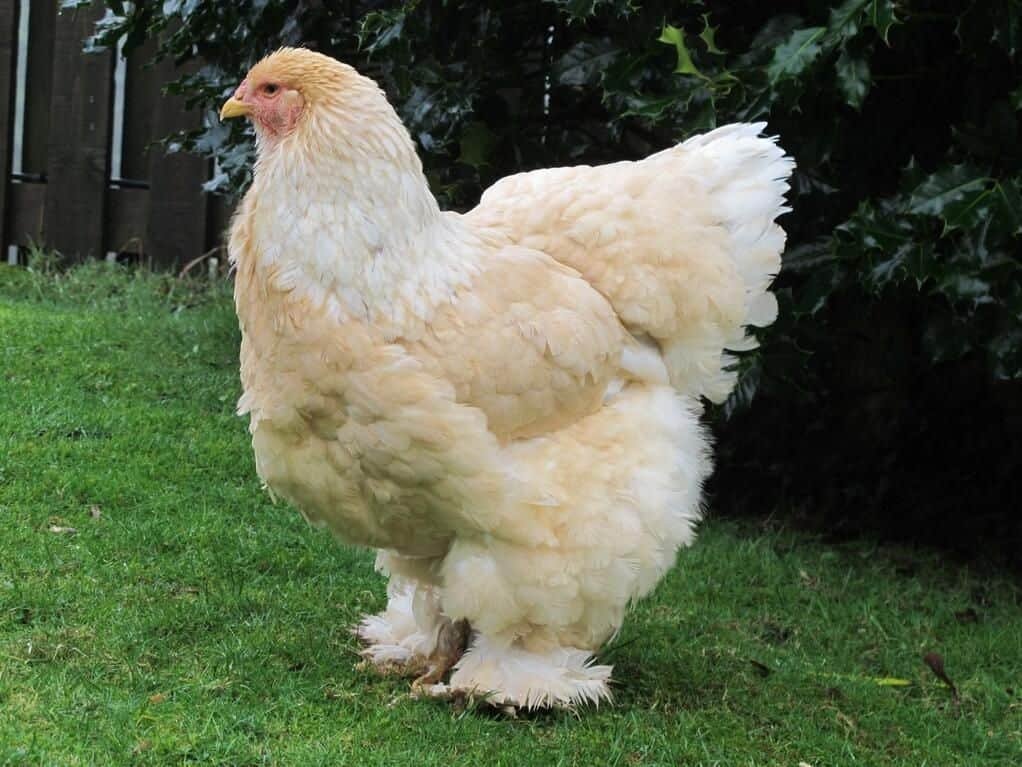
Ways to Figure out if Chicks will be Hens or Roosters
1. Auto-sexing through coloration:
Some chicken breeds are auto-sexing, which means that the sex of the chick can be determined by its plumage color. For example, in the Wyandotte breed, all chicks with black feathers are roosters, while all chicks with brown feathers are hens.
2. Sex-linked coloration & feather growth:
In some chicken breeds, the sex of the chick can be determined by the color of its feathers and the way its feathers grow. For example, in the Barred Plymouth Rock breed, roosters have barred feathers, while hens have solid-colored feathers. Roosters also have longer hackle feathers (the feathers on the neck) than hens.
3. Vent sexing:
This is the most accurate way to sex chicks, but it can only be done by a qualified poultry expert. Vent sexing is done by examining the chick’s vent, which is the opening at the end of the cloaca. In roosters, the vent is slit-like, while in hens, it is round.
4. Using comb size + color to figure out if chicks will be hens or roosters:
Roosters typically have larger and brighter combs than hens. The comb is the fleshy growth on top of the head. However, this method is not always reliable, as some hens may have large combs.
5. Wing sexing:
This method can be used to sex chicks in some chicken breeds. In the Leghorn breed, roosters have a small bump on the underside of their wings. Hens do not have this bump. However, this method is not always accurate because, in some breeds, both roosters and hens have a small bump on the underside of their wings.
6. Sexual dimorphism:
This refers to the physical differences between roosters and hens. Roosters are typically larger and more muscular than hens. They also have longer tails and wattles (fleshy growths under the beak). However, this method is not always reliable, as some chicken breeds have very subtle differences between roosters and hens.
Conclusion
Now that you know how to tell a rooster from a hen, you may be wondering why it even matters. Well, there are a few reasons why it’s important to know the sex of your chickens.
First, roosters can be quite noisy, especially in the morning. If you live in a neighborhood or have close neighbors, a rooster may not be the best choice for you.
Second, roosters can be aggressive, especially towards other roosters. If you have a small flock, a rooster may be more likely to pick on the other chickens.
Third, roosters are not necessary for hens to lay eggs. In fact, some people prefer to have all-hen flocks because they are quieter and less aggressive.
So, now that you know the difference between roosters and hens, you can make an informed decision about which type of chicken is right for you. And who knows, maybe you’ll even learn to appreciate the unique qualities of both roosters and hens.
After all, it’s not about the gender, it’s about the chicken.
Frequently Asked Questions Related to How To Tell a Rooster From a Hen
How can I tell the difference between a rooster and a hen when they are young?
It can be difficult to tell the difference between a rooster and a hen when they are young. However, there are a few things you can look for. Roosters typically have larger combs and wattles than hens. They may also have longer tail feathers.
Can a hen crow?
Yes, a hen can crow. However, it is not as common as a rooster crowing. Hens typically only crow when they are stressed or if they are trying to attract a rooster.
How do I get rid of a rooster?
If you do not want to keep a rooster, you can either give it away or have it euthanized. It is illegal to release a rooster into the wild.
What is the best way to care for a rooster?
Roosters need a coop to sleep in and a run to exercise in. They also need a diet of grains, seeds, insects, and worms. Roosters should be vaccinated against diseases and should be dewormed regularly.
How do I train a rooster?
Roosters can be trained to do a variety of things, such as crow on command or come when called.
References:
- Fresh Eggs Daily – 10+ Ways to Figure out if Chicks will be Hens or Roosters
- Grubbly Farms – How to Identify a Rooster vs. Hen
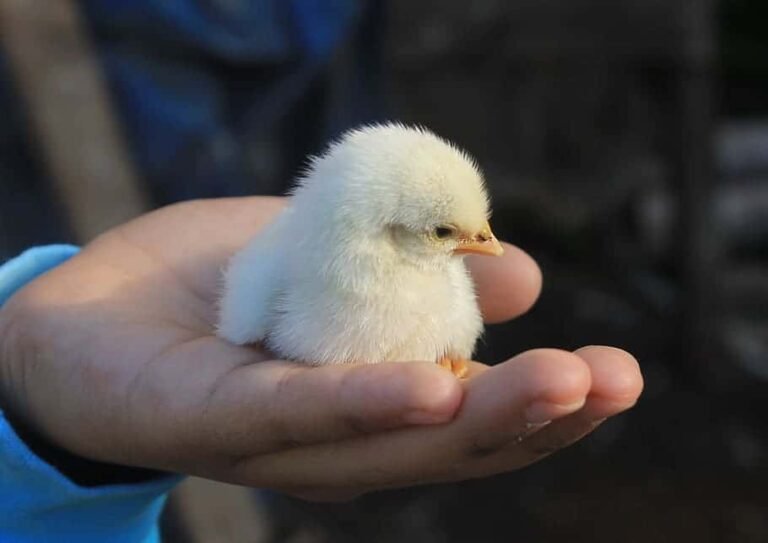

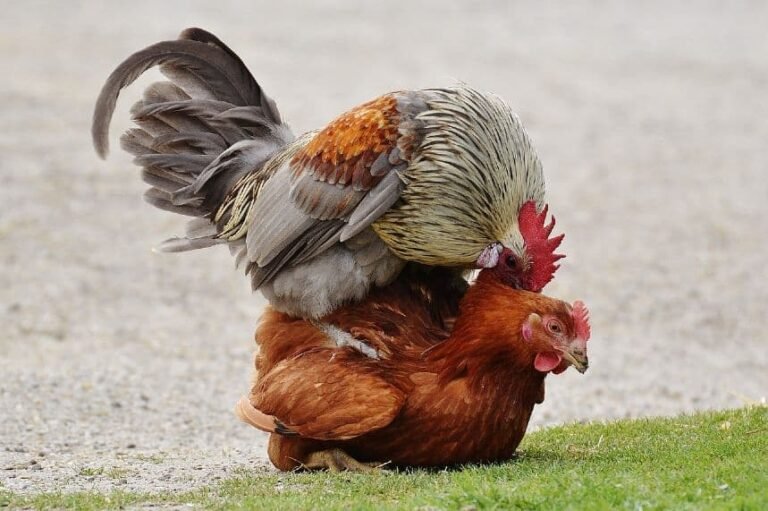
![11 Heritage Turkey Breeds [With Pictures]](https://agro4africa.com/wp-content/uploads/2021/08/Bourbon-Red-Turkey_1-e1640285809670.jpg)
